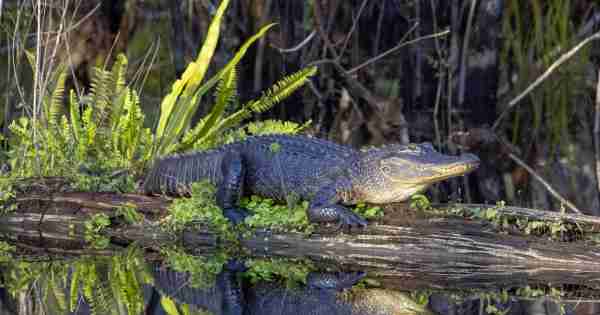Louisiana, known for its vibrant culture, mouthwatering cuisine, and picturesque landscapes, also hides a secret in its lush wilderness – a realm teeming with dangerous animals. Nestled in the southern United States, this state boasts an incredibly diverse ecosystem, characterized by swamps, marshes, forests, and coastal areas. Beneath its tranquil beauty lies a world inhabited by creatures that command both awe and respect.
From the menacing alligators lurking in the bayous to the venomous serpents coiled in the underbrush, Louisiana is home to a variety of dangerous animals that have adapted to thrive in its unique environment. The abundance of waterways, dense forests, and subtropical climate create the perfect habitat for these remarkable but potentially perilous creatures.
In this exploration, we delve into Louisiana Dangerous Animals unveiling the captivating and sometimes fearsome animals that inhabit it. We will discover the intricate ways these creatures survive and adapt, as well as the importance of coexisting harmoniously with them. Join us on a journey through the bayous and swamps as we shine a spotlight on Louisiana’s most intriguing, yet perilous, residents.
Overview of Louisiana Dangerous Animals Diverse Wildlife
Louisiana’s diverse wildlife is a testament to the state’s unique geographical and ecological features. This region’s rich tapestry of ecosystems includes swamps, bayous, marshes, forests, and coastal areas, making it a haven for a wide array of animal species. The wetlands and waterways are home to an abundance of waterfowl, alligators, and amphibians.
Meanwhile, the woodlands shelter deer, black bears, and myriad bird species. Louisiana’s coastal areas provide a vital habitat for marine life, from shrimp and oysters to dolphins and sea turtles. This diverse mix of wildlife not only contributes to the state’s natural beauty but also plays a crucial role in maintaining the balance of its ecosystems.
Importance of Understanding and Coexisting with Potentially Dangerous Animals
In the midst of Louisiana’s diverse wildlife, understanding and coexisting with potentially dangerous animals becomes paramount. Many of these creatures, such as alligators and venomous snakes, are an integral part of the state’s natural heritage. A harmonious relationship with these animals is not only essential for our safety but also for the preservation of the delicate ecological balance.
By gaining knowledge about these creatures, we can minimize conflicts and ensure the protection of both human and animal populations. This understanding underscores the importance of responsible coexistence and conservation efforts in Louisiana’s unique wilderness.
Alligators
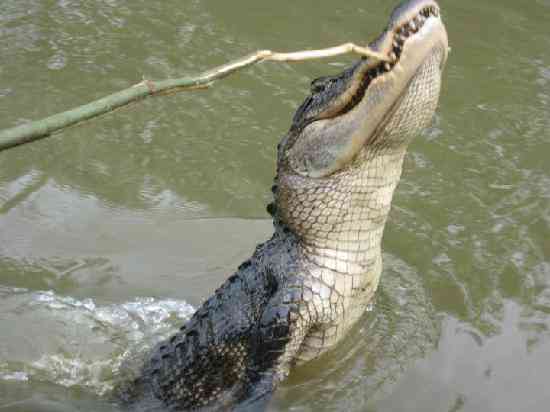
Within the murky waters of Louisiana’s swamps and bayous, alligators reign as the undisputed kings. These prehistoric reptiles have thrived in this environment for millions of years, evolving into apex predators. Alligators play a vital role in maintaining the health of wetland ecosystems by controlling prey populations and creating habitats for other wildlife.
Understanding their behavior, habitats, and the precautions needed when encountering them is crucial for coexisting safely with these magnificent creatures. In this segment, we delve into the world of alligators, exploring their role in Louisiana’s ecosystems and the measures taken to ensure human safety.
Venomous Snakes

Louisiana’s bayous and woodlands conceal a hidden danger in the form of venomous snakes. From the elusive cottonmouth to the notorious eastern diamondback rattlesnake, these serpents add a layer of intrigue and caution to the state’s wild spaces.
Understanding the habits, and habitats, and identifying characteristics of these snakes is crucial for residents and visitors alike. In this section, we delve into the world of venomous snakes in Louisiana, shedding light on their importance in the ecosystem and the precautions needed when navigating their territory.
Fire Ants
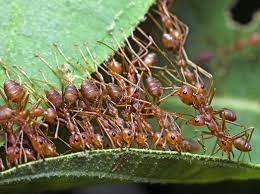
In Louisiana’s intricate ecological tapestry, one finds the presence of fire ants, small yet potent creatures that have earned a notorious reputation for their painful stings. These invasive insects, originally from South America, have proliferated across the state, impacting both human and native wildlife populations.
Fire ants build large mounds, altering the landscape and posing threats to ground-nesting birds and other small animals. Understanding their behavior and the potential harm they pose is crucial for residents and visitors alike. Mitigation strategies involve managing their populations while minimizing harm to the environment.
Brown Recluse Spiders

The secretive world of brown recluse spiders reveals itself in the nooks and crannies of Louisiana’s homes and natural environments. While these arachnids are relatively small, their venomous bite can have serious consequences for those unlucky enough to encounter them.
Recognizing their characteristics and habitats is essential for safeguarding against bites. Despite their reputation, brown recluse spiders are part of the intricate food web, preying on other pests in the environment.
Nutria

Introduced as an ill-fated experiment in fur farming, nutria have become a prominent invasive species in Louisiana’s wetlands. These large, herbivorous rodents wreak havoc on native vegetation, causing erosion and habitat loss. Understanding the ecological repercussions of their presence is vital for maintaining the delicate balance of wetland ecosystems. Control efforts aim to mitigate their impacts while preserving the integrity of these vital habitats.
Wild Hogs

Wild hogs, also known as feral swine, roam Louisiana’s woodlands and swamps, contributing to the state’s complex wildlife tapestry. These omnivorous creatures are highly adaptable, causing damage to crops, habitats, and water quality. Understanding their behavior and population management is essential for minimizing their ecological and economic impact. Hunting is one method used to control their numbers and mitigate their disruption of native ecosystems.
Stingrays and Jellyfish
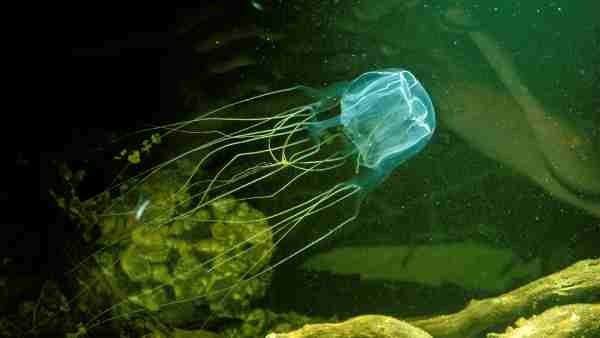
Louisiana’s coastal waters are teeming with marine life, including graceful stingrays and ethereal jellyfish. While these creatures are not typically dangerous to humans, they can deliver painful stings if mishandled or accidentally encountered. Learning about their behavior and how to interact safely with them enhances the experience of exploring the Gulf of Mexico’s underwater wonders and ensures that encounters remain memorable for all the right reasons.
Raccoons
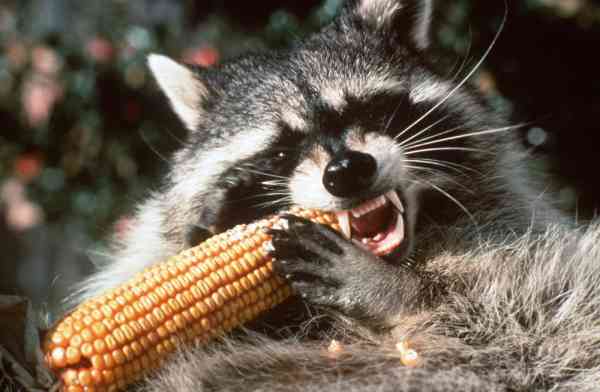
Raccoons, with their distinctive masked faces and nimble paws, are a common sight in both urban and natural environments throughout Louisiana. Their adaptability allows them to thrive in a variety of habitats, but it also brings them into proximity to human settlements. Understanding raccoon behavior, particularly their potential to become nuisances, is crucial for coexisting harmoniously. Proper waste management and secure food storage are important measures to reduce conflicts.
Coyotes

Coyotes, known for their adaptability and cunning, have made their homes in Louisiana’s diverse landscapes. Urban expansion has brought humans and coyotes into closer contact, leading to occasional conflicts. Understanding coyote behavior, such as their hunting patterns and communication, can help mitigate these issues. Coexistence strategies involve minimizing attractants, like pet food and unsecured trash, to discourage coyote visits while preserving their role in the ecosystem as apex predators.
Conservation and Coexistence
In the dynamic interplay between human activity and the preservation of Louisiana’s unique ecosystems, conservation efforts and coexistence strategies assume paramount importance. The state’s diverse wildlife and stunning natural landscapes are irreplaceable treasures, and it falls upon us to protect them for current and future generations.
Conservation initiatives span a broad spectrum, from safeguarding critical habitats to monitoring and protecting endangered species. Louisiana’s marshes, swamps, forests, and coastal areas all require vigilant stewardship.
Balancing this conservation is the necessity of coexistence, as we share our communities with diverse wildlife, from alligators to raccoons. Encounters with potentially dangerous animals demand respect and responsible behavior. Education is key, as understanding the habits and habitats of these creatures empowers us to minimize conflicts while ensuring both human safety and the preservation of wildlife populations.
Final Words
Louisiana’s diverse and captivating wildlife paints a vivid portrait of the intricate web of life that thrives within its unique ecosystems. While some creatures may present potential risks, gaining a deep appreciation for their roles and behaviors is essential for fostering harmonious coexistence.
By respecting and safeguarding Louisiana’s natural treasures, we ensure that this rich mosaic of life continues to inspire and enrich our lives for generations to come. Conservation and coexistence are the guiding principles that will help us preserve the enchanting biodiversity of this remarkable state.
Reference:
- https://countryroadsmagazine.com/outdoors/knowing-nature/pastimes-louisiana-s-red-wolf
- https://www.louisianasportsman.com/hunting/no-lions-no-tigers-but-yes-louisiana-has-beaucoup-bears-oh-my/

Rahul M Suresh
Visiting the Zoo can be an exciting and educational experience for all involved. As a guide, I have the privilege of helping students and visitors alike to appreciate these animals in their natural habitat as well as introducing them to the various aspects of zoo life. I provide detailed information about the individual animals and their habitats, giving visitors an opportunity to understand each one more fully and appreciate them in a more intimate way.

